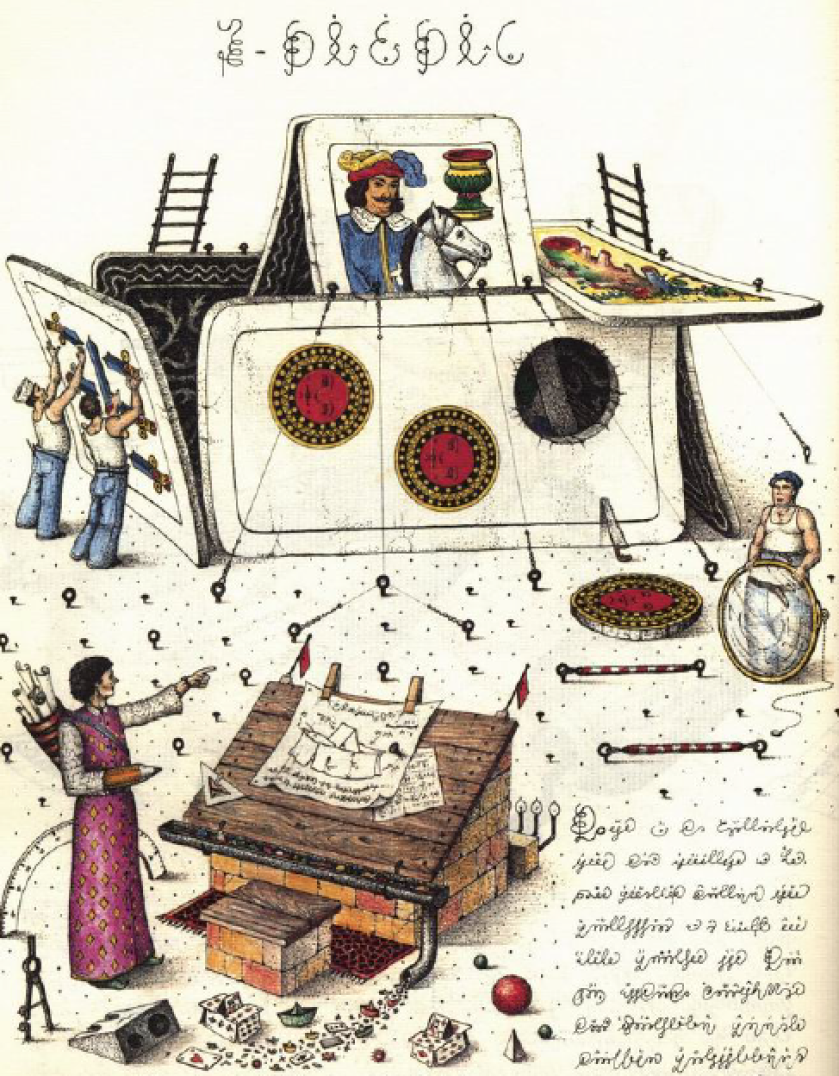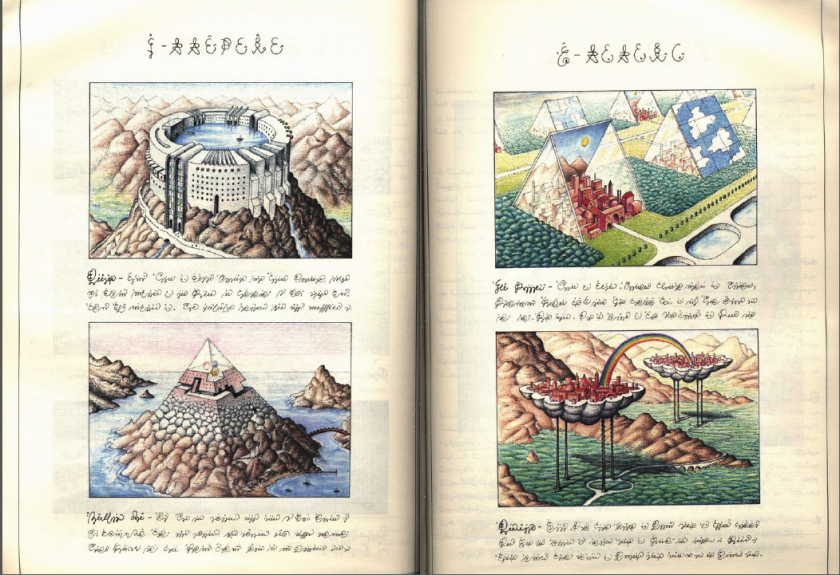Fantasy’s strong escapist quality sucks the reader into its imaginary world. The reader is transported into another world far from reality. This enables the person to experience a new world with different rules, and culture. Naturally, the architecture of the world is then altered from what is known to humans, to match the newly constructed reality. The fascination with fantasy was heightened with the book Codex Seraphinianus, illustrated and “written” by Luigi Serafini, an Italian illustrator and architect.
The book is an actual encyclopedia made up of different chapters dealing with fauna, flora, creatures, architecture, and etc. -the basic elements for the creation of a fantastic world. The fantasy lies in a totally imagined perspective on the world, which was represented graphically through hand drawings alongside an undecipherable language that Luigi Serafini had created. On the front page of the book, the Italian publisher Franco Maria Ricci, states, “I want the reader flipping through the “Codex Seraphinianus” to be like this warrior, or a child who has not yet learned to read, but rejoices in dreams or the fantasies the images suggest” (White, 2012). Serafini shares with his readers the story of an imaginary world of “hallucinogenic objet trouvés.”(Faucher, 2012). Thus, he manages to confuse the reader between the real, and the imagined, the lived, and the dreamt, between the physical experience and the mental one. The book of a purely fantastic nature, recreates the world by providing a wide array of illustrations that determine a new set of rules for its creation.
The fantastic world that the author created was based on a number of thoughts, experiences and memories he had which he then translated into his book. In fact, Serafini owes many of his illustrations to his childhood memories.
“It is the creation of a new world, built ad hoc, that shaped Serafini, the Serafini child that meanwhile studied diligently in college and spent his summers in the country home of a great-aunt, whose house was full of memories and souvenirs from exotic travels” (White, 2012).
By this the author, extracts elements of the quotidian that were locked in his memories, and mixes them with layers of fantasy to create this world.
“The childhood memories, for Serafini, unrolled like this, in a simple manner, with the naturalness of a great science fiction adventure, mixed with the “normal” childhood memories that, in their personal transformation, became history, myth, legend ”(White,2012).
A significant part of his illustrations contains objects used in everyday life that have been manipulated in a certain manner to provide a new thought of the object functionally, and aesthetically. For example, in the figure below, Serafini, uses playing cards as surfaces for a castle designed by the overlooking architect. The cards were thus, altered through their scale to fit the purpose of becoming walls.
The spaces found in the architecture chapter, capture the distant reality of the world.
The figure below shows a city confined within a triangular glass cage. The background of the city is a fake mountainous scenery. The space of the city is then repeated to form adjacent cities. Serafini,has taken the space of the city and transformed its architecture into one that redefines his image of it.
Following from this, it became clear that memories and thoughts of spaces and objects of daily life played a very important role in Serafini’s world. He was inspired to use them as base elements for his fantastic creations.
The book is written and illustrated by Luigi Serafini, an Italian artist, architect and industrial designer who for two years (from 1976 to 1978) of his life did nothing but form this document. Serafini creates within his manuscript a fantastic depiction of a different world than this one; an imaginary world based on plants, animals, objects, people and their habits, and lastly architecture. He also, invented an undecipherable language laid out through out the book disregarding the few French sentences in a couple of his illustrations. The book gives the reader, through its drawings, the opportunity to fully escape reality, and dive into another world with different cultures and rules. It is the ability of an architect and designer to create an entire unreal world that had struck my primary interest.



